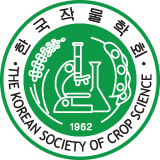Original Research Article
Abstract
References
Information
Caldwell, C. R., S. J. Britz, and R. M. Mirecki. 2005. Effect of temperature, elevated carbon dioxide, and drought during seed development on the isoflavone content of dwarf soybean (Glycine max (L.) Merrill) grown in controlled environments. J. Agric. Food Chem. 53 : 1125 -1129.
10.1021/jf035535115713029Park, S. Y., S. H. Lim, S. H. Ha, Y. Yeo, W. T. Park, D. Y. Kwon, S. U. Park, and J. K. Kim. 2013. Metabolite profiling approach reveals the interface of primary and secondary metabolism in colored cauliflowers (Brassica oleracea L. ssp. botrytis). J. Agric. Food Chem. 61 : 6999-7007.
10.1021/jf401330e23782237- Publisher :The Korean Society of Crop Science
- Publisher(Ko) :한국작물학회
- Journal Title :The Korean Journal of Crop Science
- Journal Title(Ko) :한국작물학회지
- Volume : 63
- No :4
- Pages :360-377
- Received Date : 2018-11-29
- Revised Date : 2018-12-10
- Accepted Date : 2018-12-11
- DOI :https://doi.org/10.7740/kjcs.2018.63.4.360




 The Korean Journal of Crop Science
The Korean Journal of Crop Science








